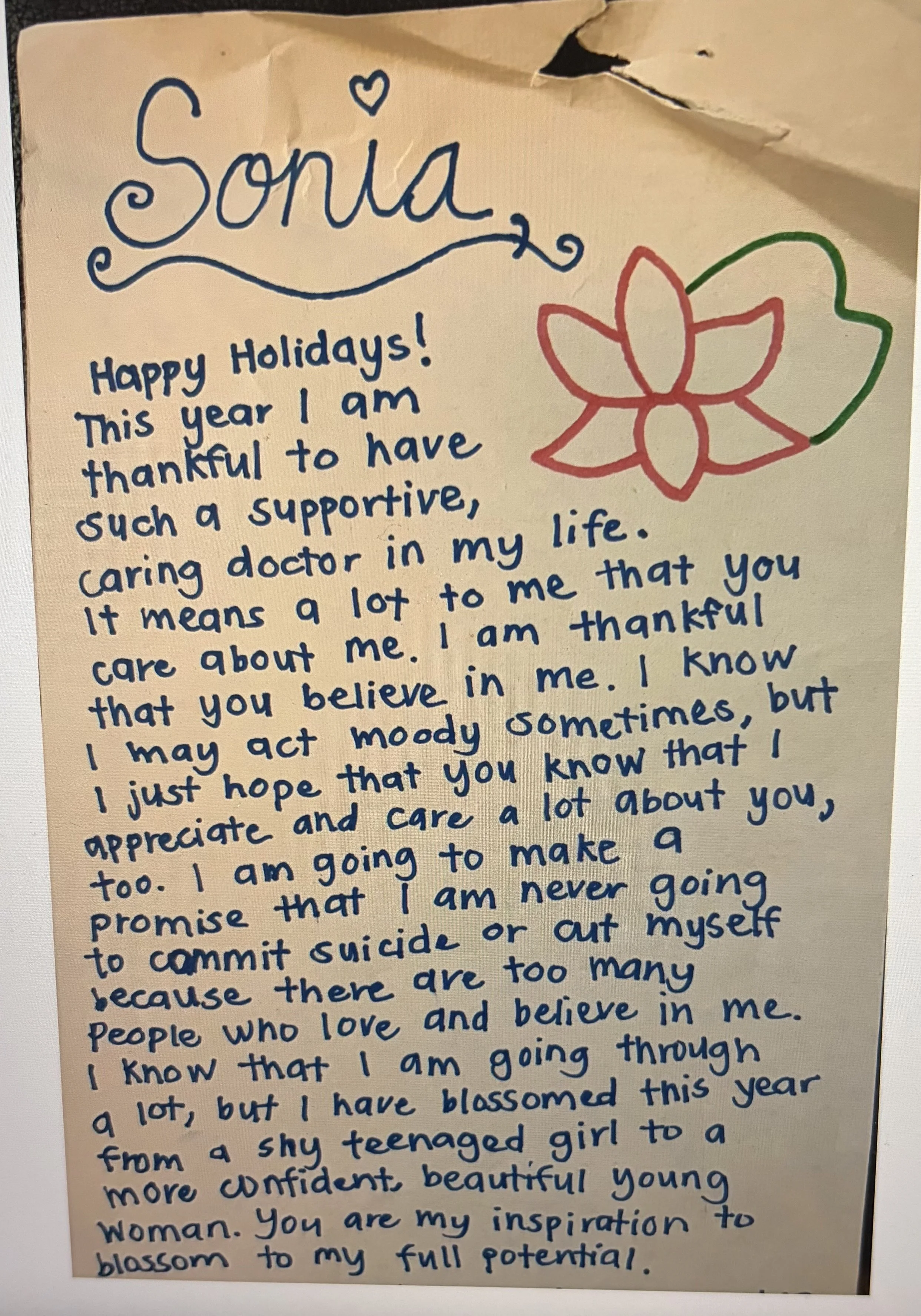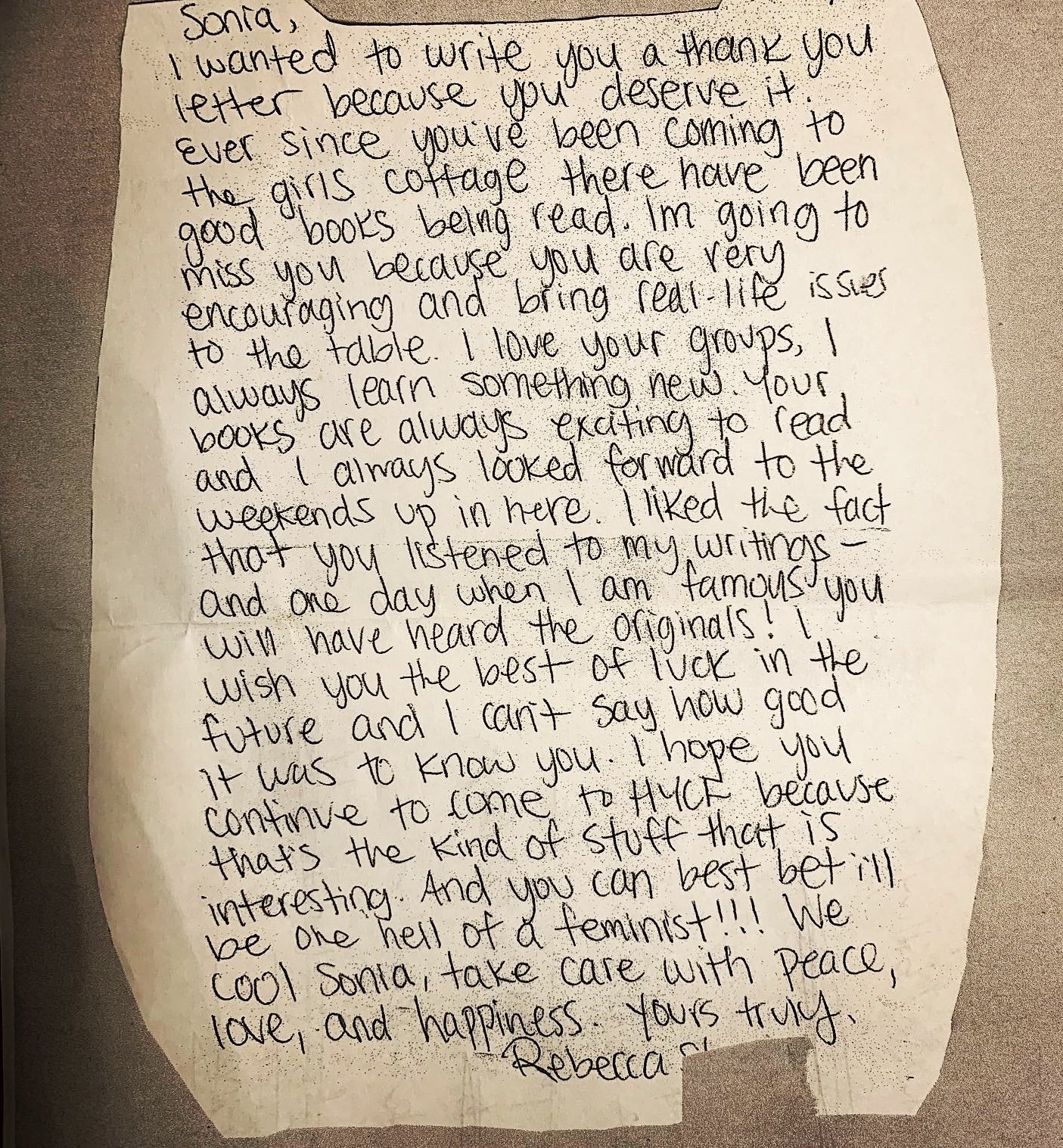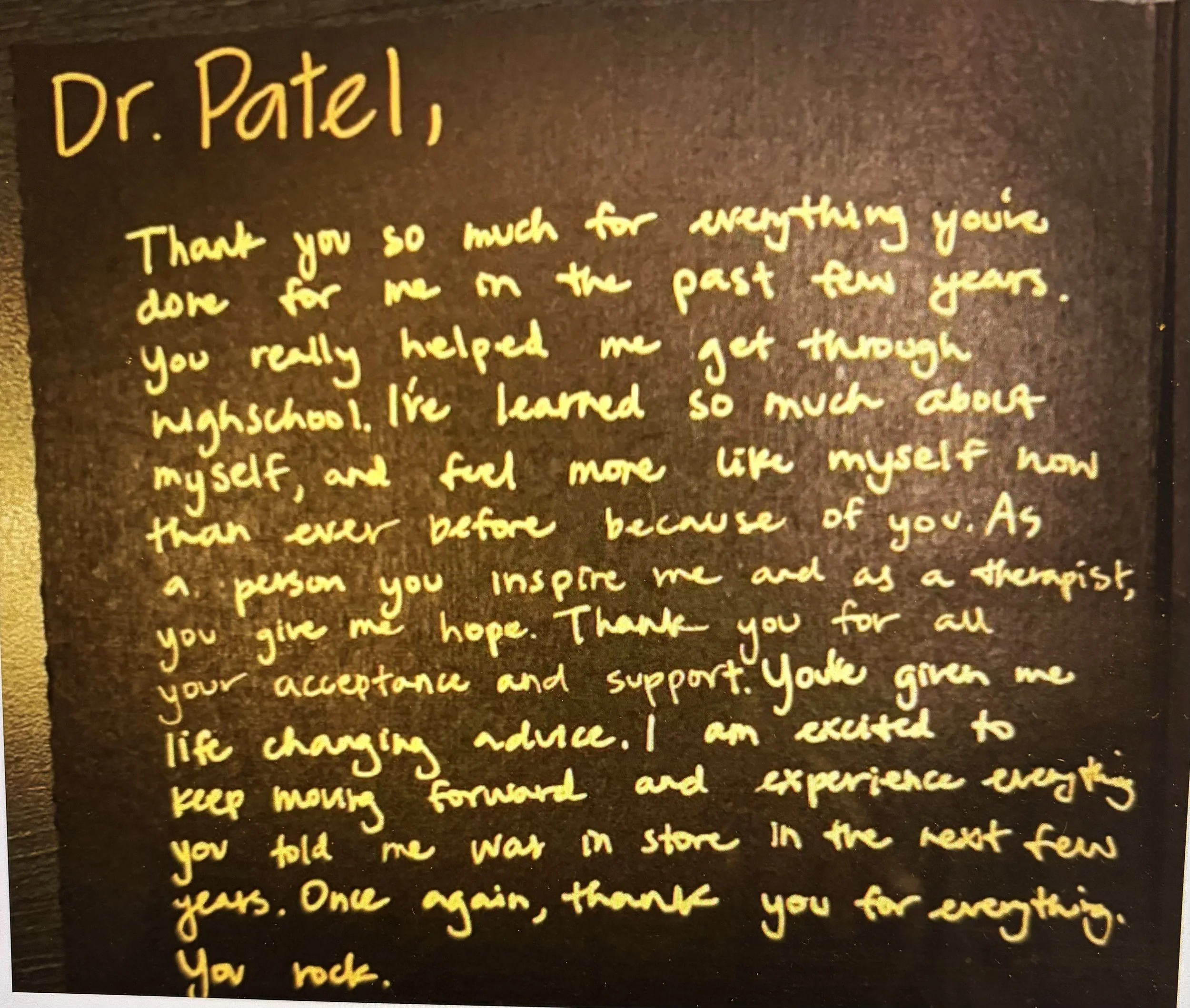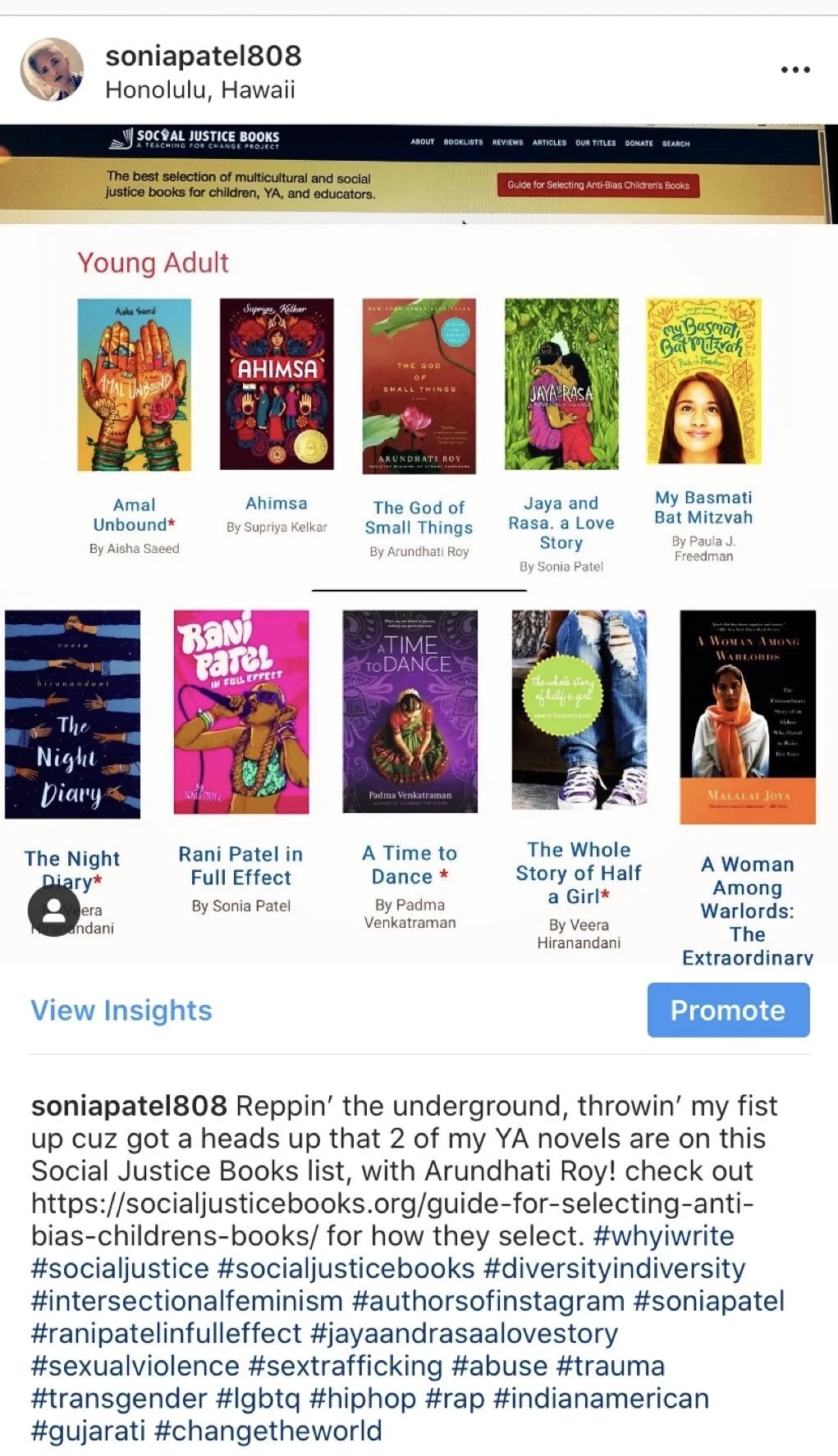author
GRATEFUL FOR THIS HONOR FROM CINCINNATI LIBRARY'S WOMEN'S HISTORY MONTH 2020 CELEBRATION!
SOCIAL JUSTICE!
Here’s a link to the Social Justice Books website: https://socialjusticebooks.org/booklists/south-asian/#ya
WHAT I'D TELL MY YOUNGER SELF REGARDING SUICIDAL THOUGHTS
I made this video for the Child Mind Institute. I’m grateful to be a part of their #myyoungerself project.
Published on Apr 20, 2019
Sonia Patel is a physician and author. Patel is psychiatrist in Oahu and is passionate about helping teens work through emotionl obstacles. She is also the author of several books including, "Rani Patel in Full Effect," and "Jaya and Rasa: A Love Story."
#MyYoungerSelf by Child Mind Institute is an anti-stigma campaign. We are grateful to Sonia for her willingness to open up about her childhood experience with anxiety and depression.
ABOUT CHILD MIND INSTITUTE As an independent, national nonprofit organization dedicated to transforming the lives of children and families struggling with mental health and learning disorders, we deliver the highest standards of care, advance the science of the developing brain, and empower parents, professionals, and policymakers to support children when and where they need it most.
SAFE DIVERSITY IN YA LIT ISN’T ENOUGH DIVERSITY
While YA novels are increasingly diverse, safe diversity—with accessible and likable protagonists and their convenient struggles—is usually seen as enough. These unoffending books tend to be championed and more popular. Unsettling diversity, on the other hand, is often frowned upon, discounted, or misconceived.
I’m a practicing child and adolescent psychiatrist and a young adult novelist. To me, dismissing YA that’s outside the realm of palatable diversity is like a psychiatrist refusing to treat certain teen patients because they have “too many problems.”
I’ve spent over fifteen years treating diverse teens who suffer tremendous adversity—abuse of all kinds, neglect, parental mental illness or drug use, etc. Medical research proves that youth exposed to these types of adverse experiences have an increased incidence of chronic medical and mental health problems, increased risky behaviors, and less future success. That’s why I’m dedicated to being in the trenches with them, helping them dodge life’s bullets. Hoping to steer them to higher ground.
An example is in order.
Kai (not his real name), a seventeen-year-old Filipino-Hawaiian-Japanese-Korean boy, is sitting across from me, staring out the window. It’s been six months of almost weekly individual talk therapy sessions. I bring up the heavy family issue. Kai presses his lips together. Suddenly he shoots up, a scowl covering his usual poker face. He takes three steps to the large window and slams his head, three times. A pause then three more slams.
I call his name. He glances over his shoulder, his eyes moist. In a gentle voice, I ask, “Will you sit down or should I call the police to keep you safe like last time?”
He punches his head three times. “It hurts so much in here,” he angry whispers, tears now streaming.
“Let’s talk about it,” I suggest.
He glares at me but then sits. “Fine,” he mutters.
That was Kai’s breakthrough moment. It was the first time he spoke about a feeling instead of showing it with alarming behavior. It was the moment we started translating his behavioral language (obsessions, compulsions that were often harmful to himself, bullying, social isolation, alcohol use, and truancy) into English words.
Still, healing took years. Negative coping strategies had been automatically reinforced, and eventually hardwired, in his brain. New, positive brain pathways took time and work to form.
I have personal experience with this. You see I grew up in a dysfunctional Gujarati Indian immigrant family with dark secrets. The opposite of the typical Bollywood family depiction. I started writing to cope. It was poetry and rap at first. It turned into my debut young adult novel Rani Patel In Full Effect.
I struggled with how to portray Rani, my Indian-American main character. In the real way teen survivors of sexual abuse present to my office? Or in a sugar coated way with righteousness, fully formed feminist strength and insight, and flowery perfect prose to make her more appealing to readers?
I decided on real. Real meant raw and flawed. Real meant making her an uncomfortable protagonist. As a reader, you invest time caring about her. But Rani doesn’t have gorgeous words to describe the pain of her abuse, she speaks by recreating her role as an object for men to use and ends up making obviously bad decisions. You want to scream at her. That’s what it like supporting a person working to recover from trauma.
My next YA novel, Jaya and Rasa: A Love Story is based on amalgams of real teen patients. Sorry, but there’s nothing comfortable about walking in the shoes of a depressed, suicidal Indian-American trans boy and a sex trafficked mixed ethnicity girl.
My third YA novel, Bloody Seoul, will be released in July. The main character, Rocky is Korean and has aspects of Kai, other patients, and my imagination. If Rocky kept a journal, his abrupt sentences would reveal his brain’s ingrained survival reactions to the chaos of his mother’s abandonment and his father’s violence—a hard edge, limited empathy, emotional unavailability, and OCD behavior.
My fourth YA novel will follow suit. I can’t stop, won’t stop, introducing troubling protagonists because there are entire groups of diverse youth not yet represented.
YA lit needs to transcend safe diversity. It needs to be enthusiastically inclusive of disturbing realistic novels that purposefully miss the bull’s-eye of acceptability. Even when it’s really hard, we need to try to understand all teen protagonists who engage in incomprehensible behaviors. Even if we don’t agree, we need to try to empathize with them when they make upsetting choices. That is true tolerance. That is true diversity.
CHECK OUT THE HAWAII BOOK & MUSIC FESTIVAL! I’LL BE REPPIN’ YA LIT & MENTAL HEALTH ON 4 PANELS.
https://hawaiibookandmusicfestival.com/
SCHEDULE FOR SONIA PATEL:
Saturday, May 4
2:00pm
Imagining Other Places, Other Cultures
Sunday, May 5
12:00pm
1:00pm
2:00pm





